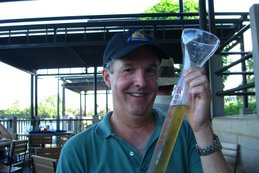In the summer of 1972, the one movie I really wanted to see was “Superfly,” in which a badass dude killed lots of people (really all the plot a 14-year-old needs). It starred Ron O’Neill as the badass dude, and I have no idea why I remember his name. But I think he wore a hat and a badass coat. But he definitely killed a lot of people. Drug dealers, I think, making it morally OK.
“Superfly” and dozens of similar movies (badass dude killing lots of people) would come to be known as “Blaxploitation” films, because it starred badass black guys killing lots of people, with a decent share of them being white.
But all I knew at the time was, right, badass dude killing people. The whole race thing never occurred to me, partly because I grew up in a very white town in the Bay Area. How white? I would not meet my first black acquaintance until the following year, who also was the only black person to attend our school. But our real understanding of race relations was stunted because A) his name was Willie and B) he was a starter on the basketball team despite a unique combination of inabilities to dribble and shoot. And Willie also would be the most popular kid in school, as much a reflection of his personality as it may have been guilt – it just wasn’t something we thought about then.
And it was on a Saturday morning I eagerly looked through the entertainment section of the Oakland Tribune and was dismayed to see “Superfly” was not playing in any theater within 10 miles of us. That seemed odd for a film about a badass dude killing people. Who wouldn’t want to see that?
I mentioned that to my dad, who had promised to take me to “Superfly.”
“Dad, is Telegraph Avenue far from here"?” I said.
“I’m not sure where it is,” dad said. “Why?”
“Because that’s wher ‘Superfly’ is playing. At the Rialto.”
“Nothing closer? What about the Regency?”
“Nope, just at the Rialto.”
My dad looked at the newspaper, because it’s well-known fathers do not take anything at face value, particularly the ability of 14-year-olds to accurately read a newspaper.
“Hmm.” he said. handing it back to me. “Well, that’s pretty far, but I did promise.”
And with that we chose the early afternoon show and soon set off in our green Pinto station wagon toward the heart of Oakland.
Within 35 minutes, we exited the freeway and cruised along streets that decidedly were not suburban. No yards, no redwood fences, just a lot of concrete and chainlink. As we turned onto telegraph the Rialto came into view, with “Superfly” on the marquee.
And there was already a huge crowd lined up outside.
“Gee, son, I’m not sure I can find a parking spot,” my dad said, slowing as we passed the theater. “And to be honest, I didn’t think it be so crowded, you know, and it looks like we’re a little late to get a good seat.”
But here is what I was thinking.
“Holy CRAP, look at all the BLACK people.”
And though my did was talking about parking and lines, this is what he was thinking.
“Holy CRAP, look at all the BLACK people.”
As far as I knew, we were the only white people in that area code. And I was positive we were the only people driving in a green Pinto station wagon. We circled the block once, mutually agreeing that even though it was about a badass dude killing a bunch of people, it was too crowded so we would try another time.
We never tried another time.
I can look back now and appreciate what my dad did. Of course he knew what the audience would be in the heart of Oakland, but he took me anyway, perhaps hoping both of us could overcome our discomfort in a time when race relations were still rather strained.
We couldn’t, of course, but it was another story to add to the family lore, and yet another reason I’ve had so much respect for my father.

